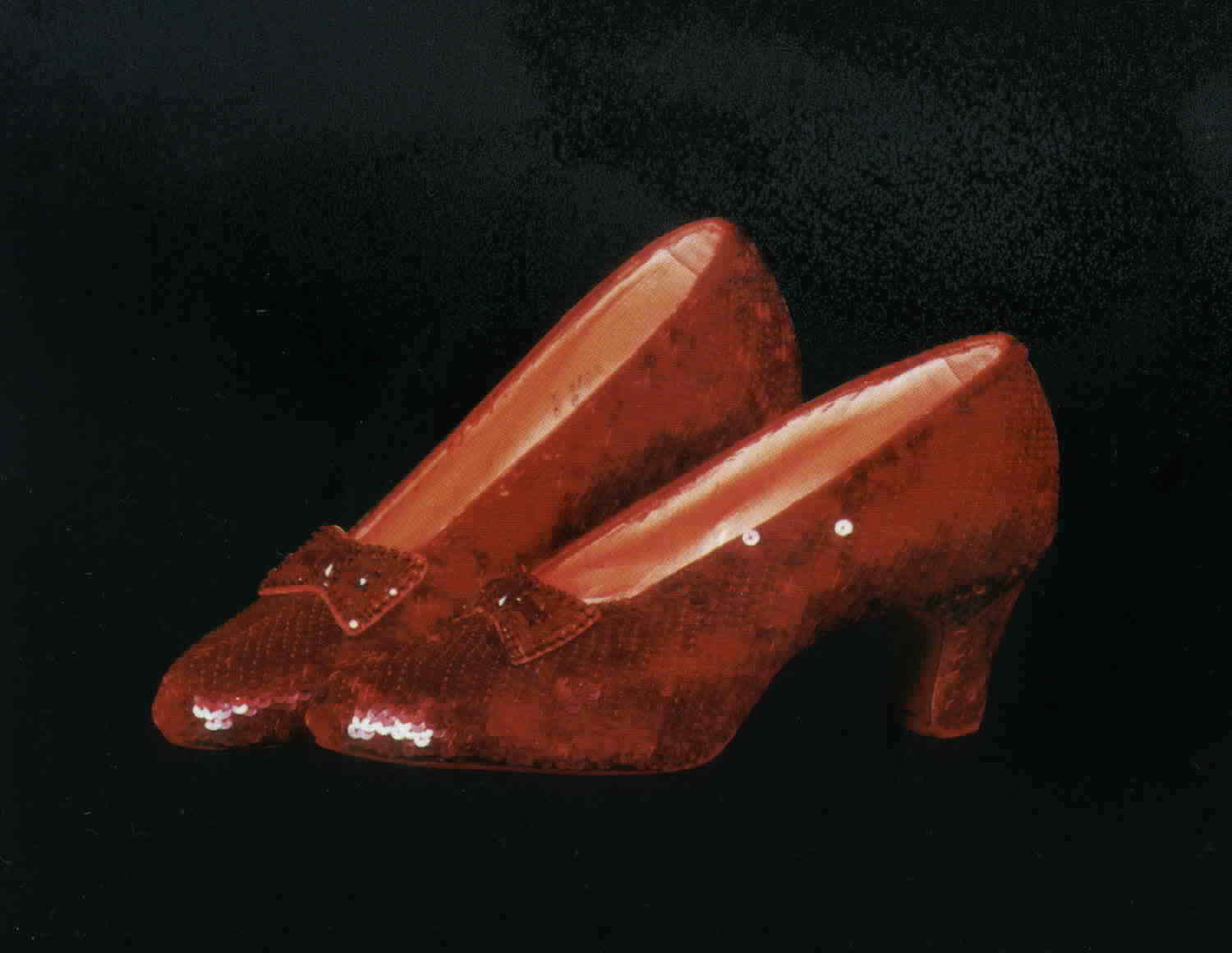
That I am part of the earth my feet know perfectly . .
. --D.H. Lawrence
I do not buy shoes. I
covet them. --Elizabeth Kastor (1994:28)
Besides,
one look at the shoes, he [George Masters, "Stylist to the Stars"] said, told
him all he needed to know about a woman. --Robert McG.
Thomas, Jr. (1998:A6)
Usage: In expressive style, women's shoes a. reveal, b. conceal, or c. mask the feminine foot.
Bare. Women's revealing shoes bare the toes, heel, ankle, and (or) top of the foot (i.e., the instep). Revealing shoes call attention to a woman's thinner bones, smaller joints, and delicate achilles tendons. Examples include a. 1920s low-cut pumps, with straps buttoned or buckled across the instep; b. 1930s high heels with ankle straps and peep-toes; and c. pointed, stiletto heels of the 1950s and 60s (which may reveal toe cleavage, i.e., the hollow between the big toe and 2nd digit).
Bind. Concealing shoes cover, yet do not hide, the feet. Rather, they enhance the foot's feminine silhouette, contour, and shape. A concealing shoe's laces and close, binding fit transmit a suggestive, erotic message of tight containment. Types of concealing shoes include a. ankle-high buttoned boots of the 1900s; b. 1970s mid-calf boots, cut close to the leg; and c. tight, patent-leather, ankle-high shoes worn by pop singers of the 1980s (e.g., Madonna).
Mask. Revealing and concealing shoes proclaim femininity,
individuality, and sexual allure. The lady's masking shoe, in contrast, covers
the foot but suggests little about sexuality, individuality, or mood. Indeed,
because they are visually quiet, masking shoes downplay personality by
discouraging its notice. Often worn with socks, "sensible" shoes tend to be
boxy, sturdy, and squared-off (i.e., masculine).
Media. 1. In the Washington Post Magazine,
Elizabeth Kastor poetically describes the expressive force of women's shoes:
"Ahhhhh, shoes. Such potent symbols of sexuality and fertility. Think of
Cinderella. Think of the old woman who lived in a shoe and her numerous
children. Think of the dancer in the movie 'The Red Shoes' whose feet--and
conflicted desires--danced her to death. Think of tying shoes to the back of the
wedding car. Think of shoes as a narrow space in which something is inserted . .
." (Kastor 1994:29). 2. "[Sonja] Bata [founder of the Bata Shoe Museum in
Toronto] says [Edward] Maeder [museum director] is absolutely right [about his
statement, 'Skinny shoes survived because people couldn't wear them'],
adding that women always have saved shoes of their childhood and youth and
marriage, when their feet were at their daintiest" (Trueheart 1995:C10).
Observations. 1. 2,600 years ago, Greek women
favored white and red, snug-fitting leather shoes, and owned as many as 20 pairs
at a time. 2. Forty to 60 new styles of women's shoes appear
each year in U.S. shopping malls (Fleishman 1994). 3. "In the marriage
rituals of the Middle Ages, the father passed the bride's shoe to the groom . .
." (Kastor 1994:30). 4. Today, American women buy an average
five pairs of shoes a year (American men average
two).
Personality. Women's shoes display more "personality" than
do men's. Many styles, e.g., are given personal names, such as the Nordstrom
line's "Angelique," "Gretta," and "Bree." "So, how does it work? 'Well, say
there's a tailored-type boot, and it looks like the kind of shoe a woman might
wear to a concert,' he [Richard Leeker, a vice president and "senior line
builder" at Brown Group] says, 'Well, we call it "Concert"'" (Fleishman
1994:F4).
Evolution I. The slimness of women's footwear evolved from a narrow shoe known as a poulaine (originally from Poland), popular with men in the 12th and 15th centuries. So long was the tip of its tapering toe--and so suggestive when wagged back and forth--that in 1468, the Pope condemned the poulaine as "a scoffing against God." Near the end of the 15th century, the masculine version of the poulaine was driven to extinction by a wider, broad-toed shoe, shaped like the bill of a duck, which completely replaced it.
Evolution II. While the poulaine died out, its message lived on, and the submissive meaning of slim, pointed toes ("I am harmless--you may approach"; see, e.g., BARBIE DOLL) is still fashionable today. Narrow pumps and high heels, e.g., which incorporate the poulaine's timid taper, are among the most popular and attractive of women's shoes.
Copyright 1999 - 2016 (David B. Givens/Center for Nonverbal Studies)
Photo of Dorothy's ruby slippers (picture credit: unknown)